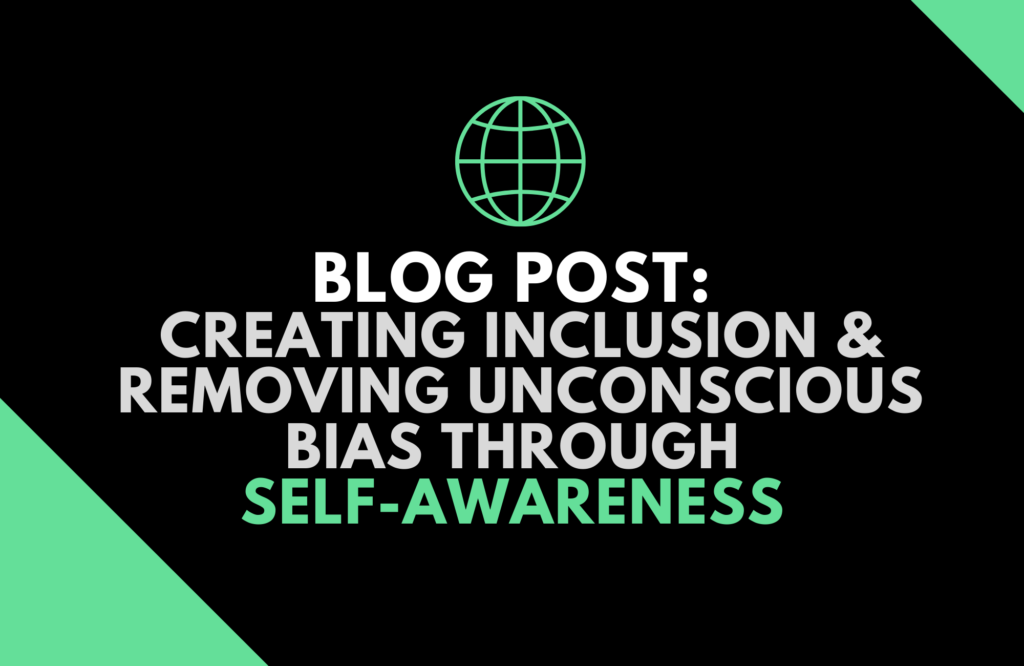Does everyone in your organization feel like they are wanted, valued, and respected?
Does everyone in our organization feel like they are wanted, valued, and respected?
This short, yet revealing question can help us identify if our organization is creating a culture of inclusion. Notice, it doesn’t say, do I believe that we are inclusive. Instead, it pulls back the curtain and challenges individuals to look at the workplace from another person’s perspective.
Wanted, valued, and respected.
If these three words help build the foundation of inclusion, why do we have such a difficult time creating an inclusive workplace?
After all, most of us are taught concepts about kindness, equality, and respect from a young age. It seems the older we get, gathering more experiences, blinders slowly cover our eyes and our interactions with others become habitual and unconscious.
We naturally gravitate toward people who are similar to us. People who have experienced a familiar upbringing and look at the world through a similar lens.
As this becomes cemented into our conscious minds unconsciously, individuals who are different from us, whether culture, religion, race, ethnicity, sexual orientation, age, or upbringing, are often avoided.
Some might say this is a natural tendency to be around people, both in our personal and professional lives, who make us feel “comfortable.” However, this quest for comfort ultimately means some people make us uncomfortable.
If we pause for a moment, reflecting on our work relationships (and personal ones too) we can ask ourselves the question, “Does everyone I interact with feel wanted, valued, and respected?”
Even more, do people make me feel wanted, valued, and respected?
Perhaps the greatest barrier to inclusion in our workplace, communities, nation, and the world is not making people feel wanted, valued, and respected but instead finding all the mental blocks within ourselves that prevent us from interacting with everyone we meet in a respectful and accepting way.
It is easy to dismiss this thought and say, “I treat everyone with respect.” Or, “I am one of the most accepting people in our organization” and that may be true. But if you’re anything like me then there are times in your day where you unconsciously exclude others.
Maybe not with blatant actions, but mentally dismissing their ideas, their perspective or their contribution.
It’s not about declaring that you or I don’t have any more inner work to do, instead, it’s about having the courage to challenge ourselves and identify the areas where we support, reinforce, or ignore the inequities and inequalities that exist. A willingness to truthfully acknowledge the different experiences that people face and a courageousness to be part of the solution for inclusion.
So how do we go about this? How do we as individuals and organizations create an inclusive culture?
One of the greatest ways to create inclusion isn’t about discovering “new” or “positive” behaviors to start practicing but building a greater level of self-awareness where we can catch ourselves when we are mentally excluding others. If we can catch ourselves then we can call ourselves out when we dismiss the insights or contributions from others and most importantly correct ourselves from the inside out.
I call this the 3 C’s.
· Catch
· Call-out
· Correct
It’s less about smiling at people, starting superficial conversations with the hope of creating acceptance, or acting like you genuinely care about a co-worker when you really don’t and more about doing the work that nobody sees. The internal work that allows you to identify the mental barriers you may build between yourself and another person.
Once those barriers are identified, then comes the deep work of bridging the differences that exist. This is the process of using and viewing the differences between us as the creative tension necessary to create a lasting transformation for the better.
So what can we do today to help be an agent of inclusion?
We can practice the 3 C’s.
Let’s acknowledge that inclusion is not possible without you and me doing our part. Let’s catch ourselves when we exclude others, mentally, emotionally, or physically.
Let’s call ourselves out and reflect on how that unconscious pattern of exclusion has shown up throughout our lives. Ultimately realizing that everything we do causes an effect and we are the causal agent of both inclusion and exclusion.
Finally, let’s correct ourselves and break down those barriers by identifying Small Acts of Inclusion that can be practiced now.
Remember, inclusion is not something that magically appears because of a diversity workshop or a new vision for an organization, instead, inclusion is something that occurs through you, by you, and because of you.

